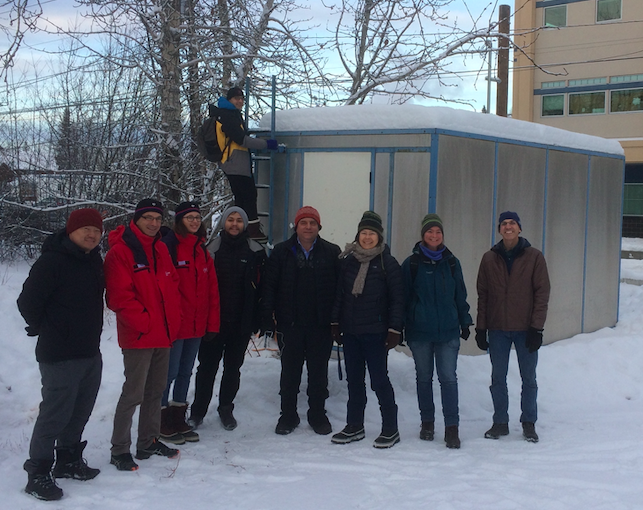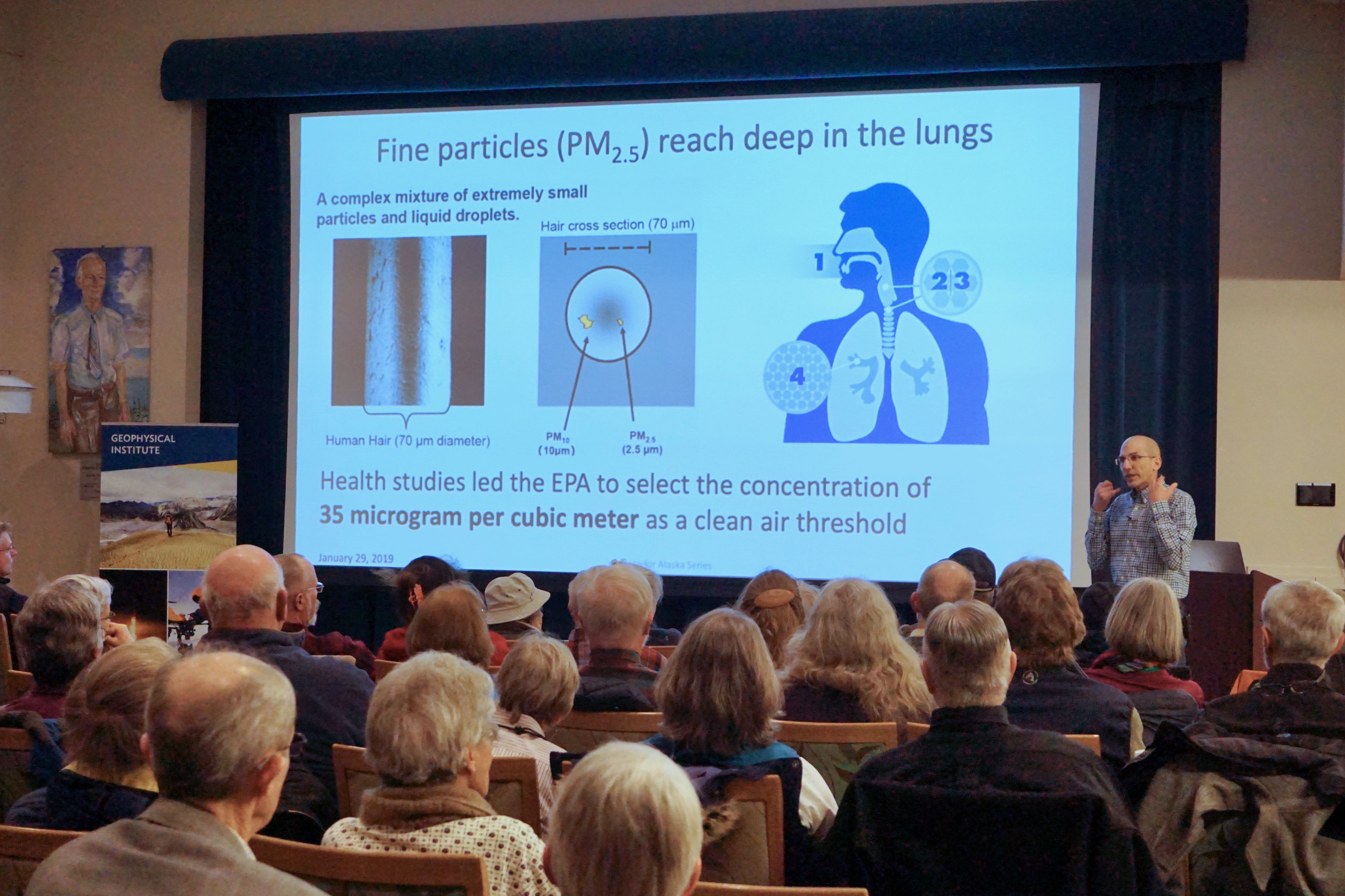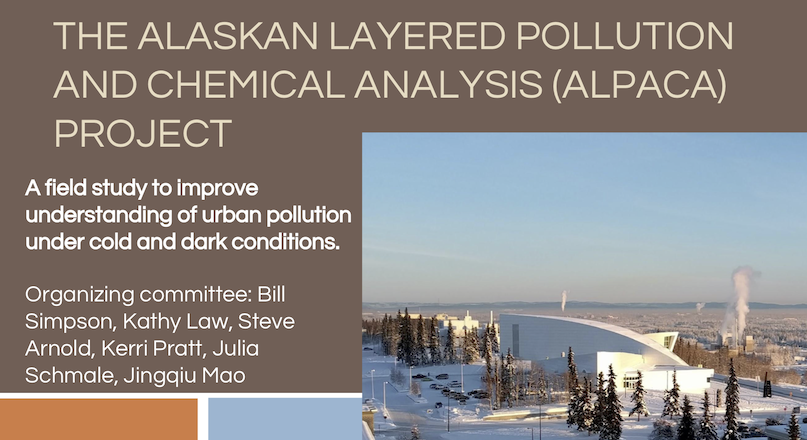The formation of secondary aerosol particles (sulphate, nitrate, organics) in cold, dark, wintertime/ early spring Arctic conditions is very poorly understood. The role of Arctic boundary layer meteorology that trap pollution near the surface during stable conditions is also unclear. These gaps in our knowledge hinder our ability to simulate aerosol particles in background Arctic Haze and in air under the influence of local pollution, such as wood and fuel burning, and their impacts on atmospheric composition and climate. To tackle these issues a major international measurement campaign is planned for Jan/Feb 2021 in and around Fairbanks, Alaska, as part of the ALPACA (Alaskan Layered Pollution and Arctic Chemical Analysis) project developed as part of the international IGAC/IASC PACES (air Pollution in the Arctic: Climate, Environment and Societies) initiative, https://pacesproject.org/.

To prepare for 2021, researchers from the Geophysical Institute at the University Alaska Fairbanks (UAF) and French laboratories (LATMOS, LPC2E, LA, IGE, LCE, ISTeP) are participating in a pre-campaign in Fairbanks in November-December 2019. The focus is on testing instrumentation under harsh wintertime conditions and making some preliminary measurements of aerosol sources and distributions during Arctic winter, a time of year when very little data exists. The campaign is being carried out with support from the French Centre National de la Recherche Scientifique (CNRS) program LEFE (Les Enveloppes Fluides et l’Environnement), the French Polar Institute Paul-Emile Victor (IPEV) and related UAF projects.
 LATMOS: Kathy Law, Francois Ravetta, Slimane Bekki, Jean-Christophe Raut; IGE: Joel Savarino; LPC2E: Tjarda Roberts; LA: Brice Barret; ISTeP: Erwan Martin; LCE: Barbara D’Anna; LMD: Jean-Baptiste Madeleine, Christophe Genthon UAF: Bill Simpson, Jingqiu Mao, Javier Fochesatto, Meeta Cesler-Maloney
LATMOS: Kathy Law, Francois Ravetta, Slimane Bekki, Jean-Christophe Raut; IGE: Joel Savarino; LPC2E: Tjarda Roberts; LA: Brice Barret; ISTeP: Erwan Martin; LCE: Barbara D’Anna; LMD: Jean-Baptiste Madeleine, Christophe Genthon UAF: Bill Simpson, Jingqiu Mao, Javier Fochesatto, Meeta Cesler-Maloney
Contacts: Kathy Law — Kathy.Law@latmos.ipsl.fr, Bill Simpson — wrsimpson@alaska.edu


 LATMOS: Kathy Law, Francois Ravetta, Slimane Bekki, Jean-Christophe Raut; IGE: Joel Savarino; LPC2E: Tjarda Roberts; LA: Brice Barret; ISTeP: Erwan Martin; LCE: Barbara D’Anna; LMD: Jean-Baptiste Madeleine, Christophe Genthon UAF: Bill Simpson, Jingqiu Mao, Javier Fochesatto, Meeta Cesler-Maloney
LATMOS: Kathy Law, Francois Ravetta, Slimane Bekki, Jean-Christophe Raut; IGE: Joel Savarino; LPC2E: Tjarda Roberts; LA: Brice Barret; ISTeP: Erwan Martin; LCE: Barbara D’Anna; LMD: Jean-Baptiste Madeleine, Christophe Genthon UAF: Bill Simpson, Jingqiu Mao, Javier Fochesatto, Meeta Cesler-Maloney
